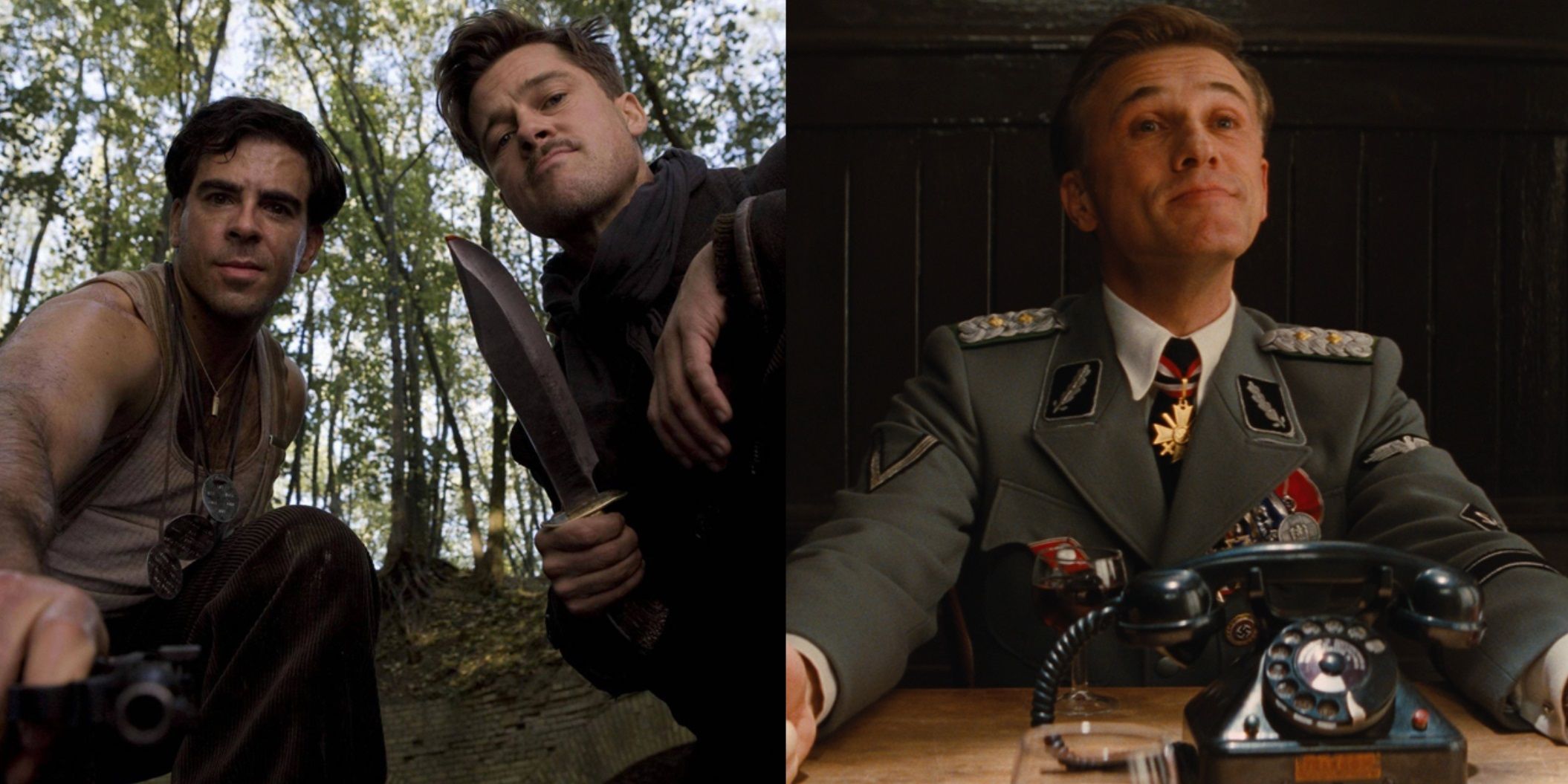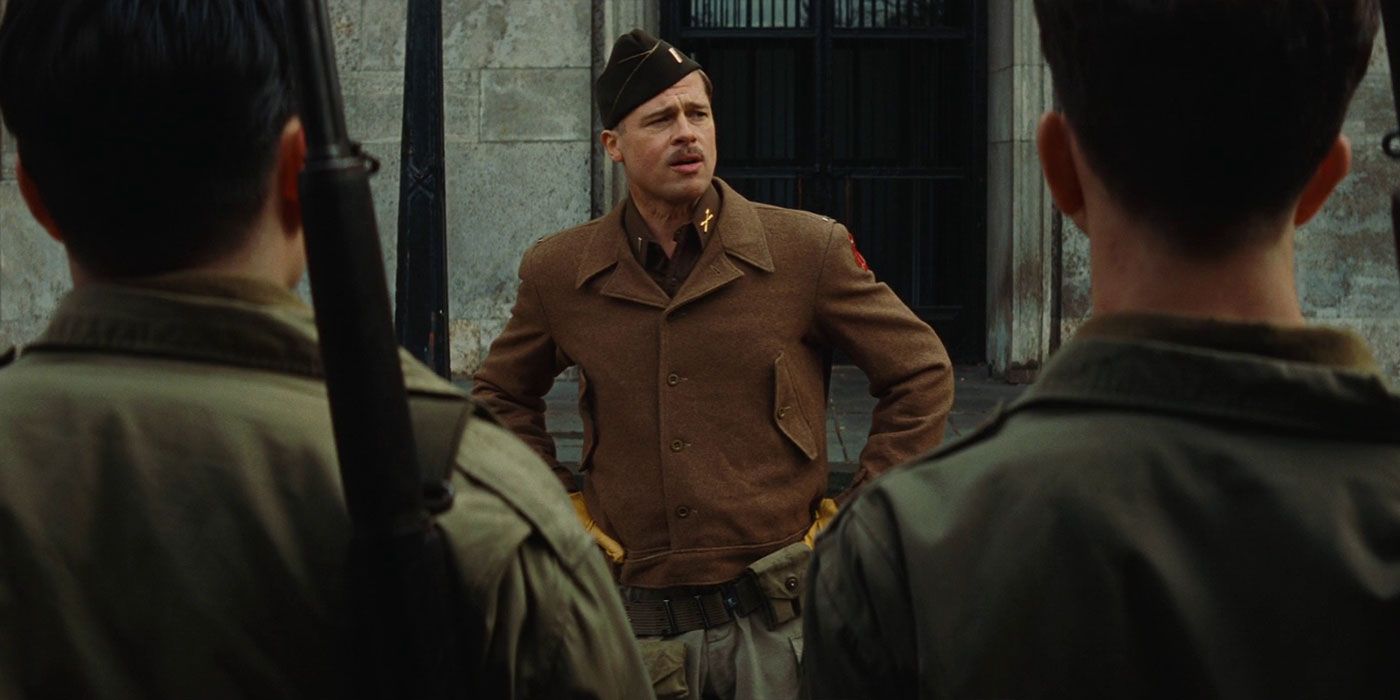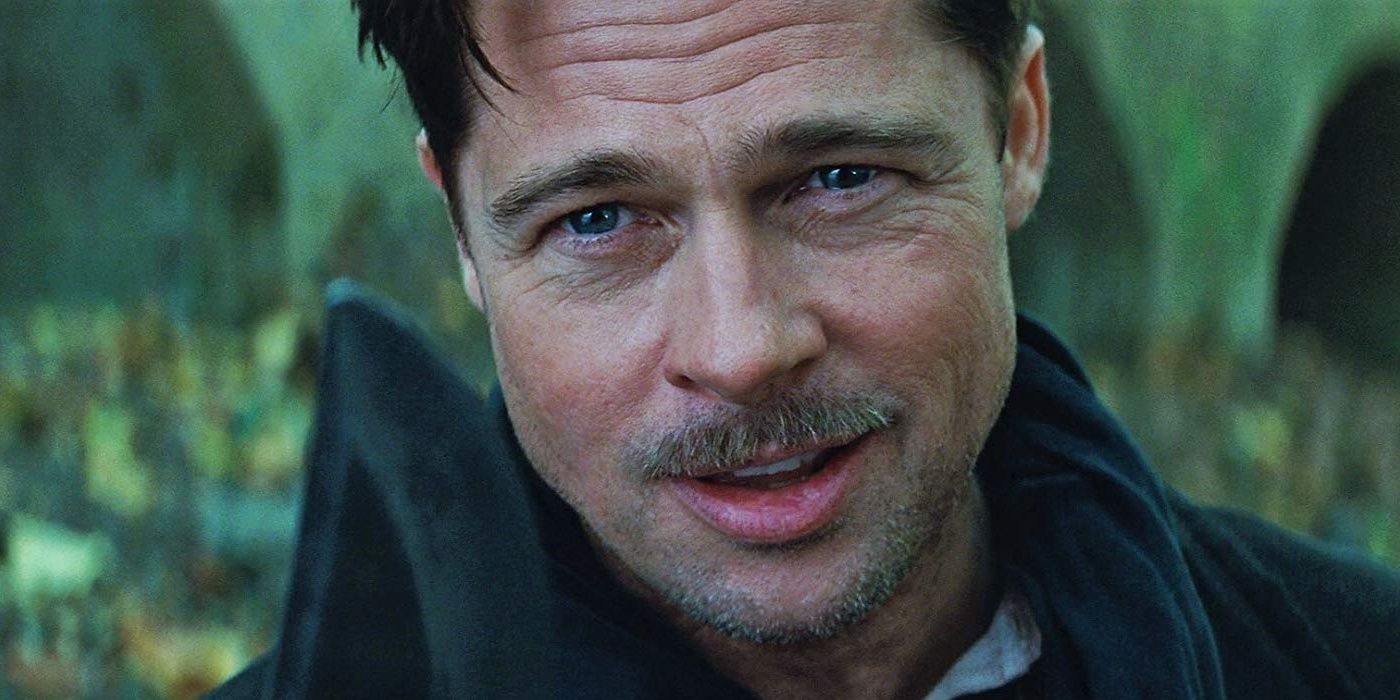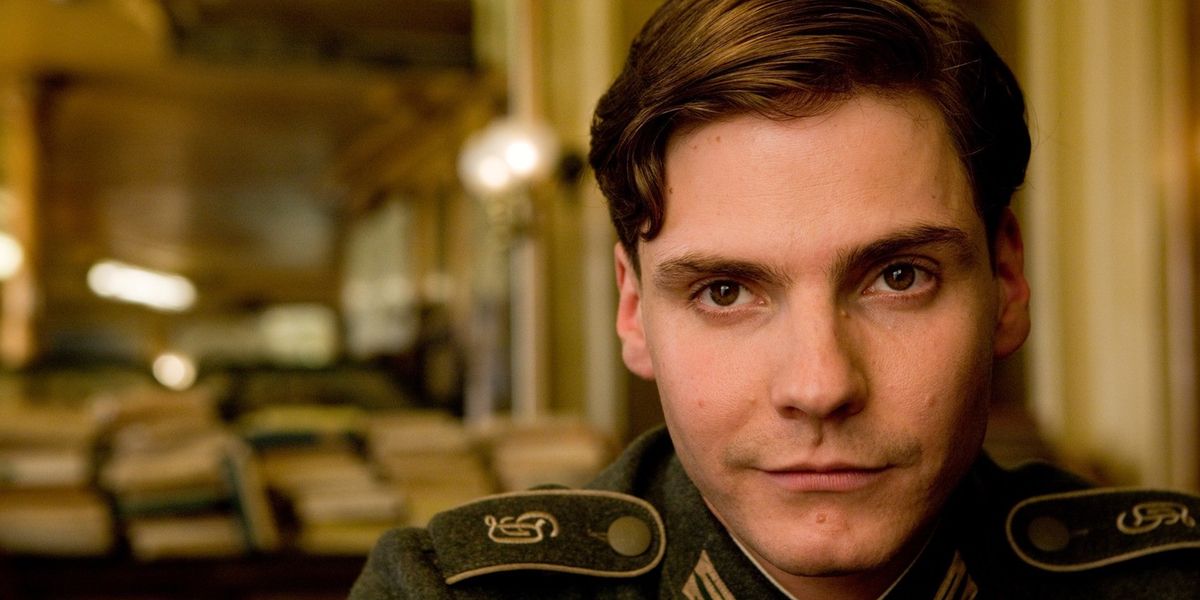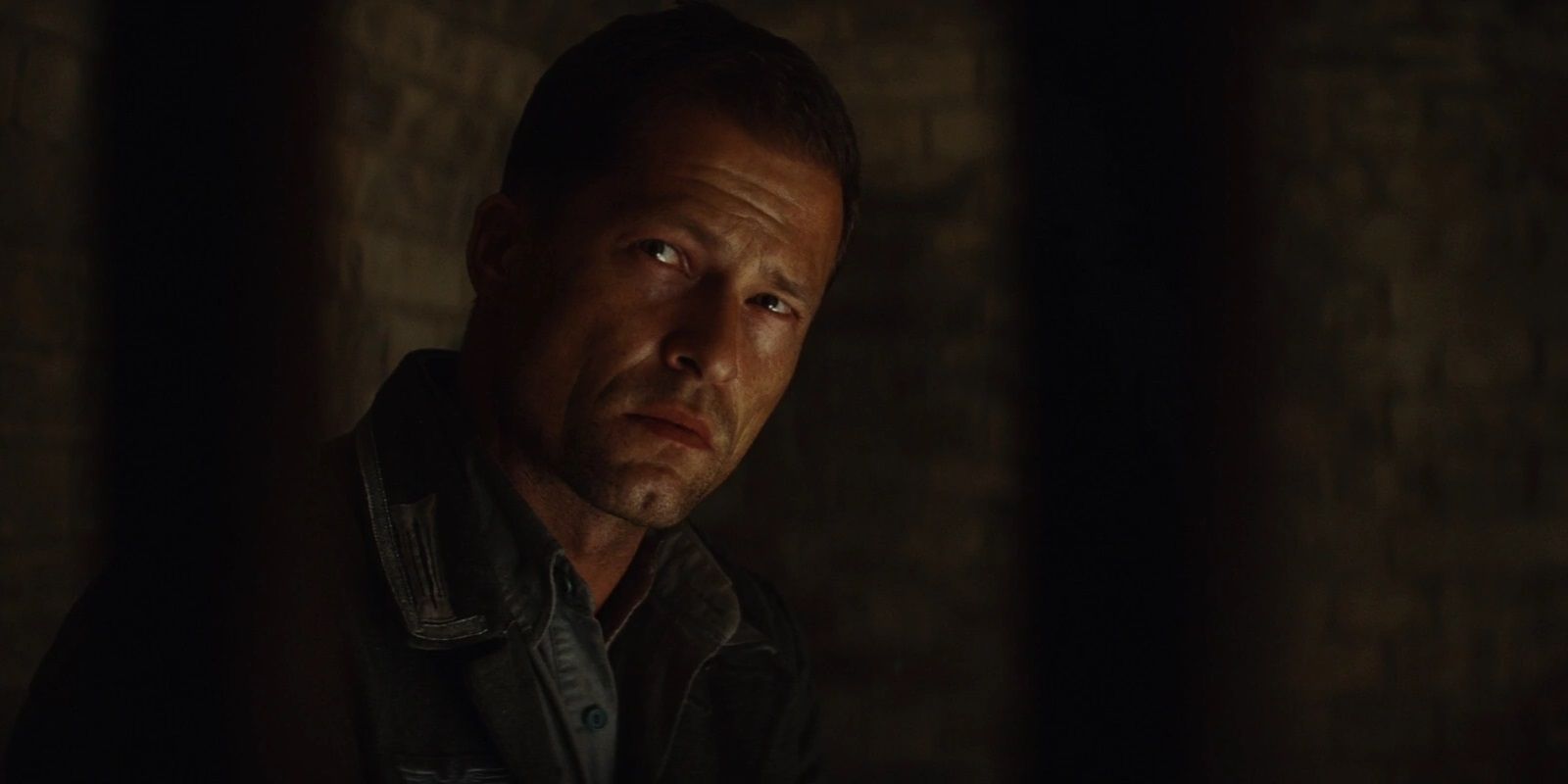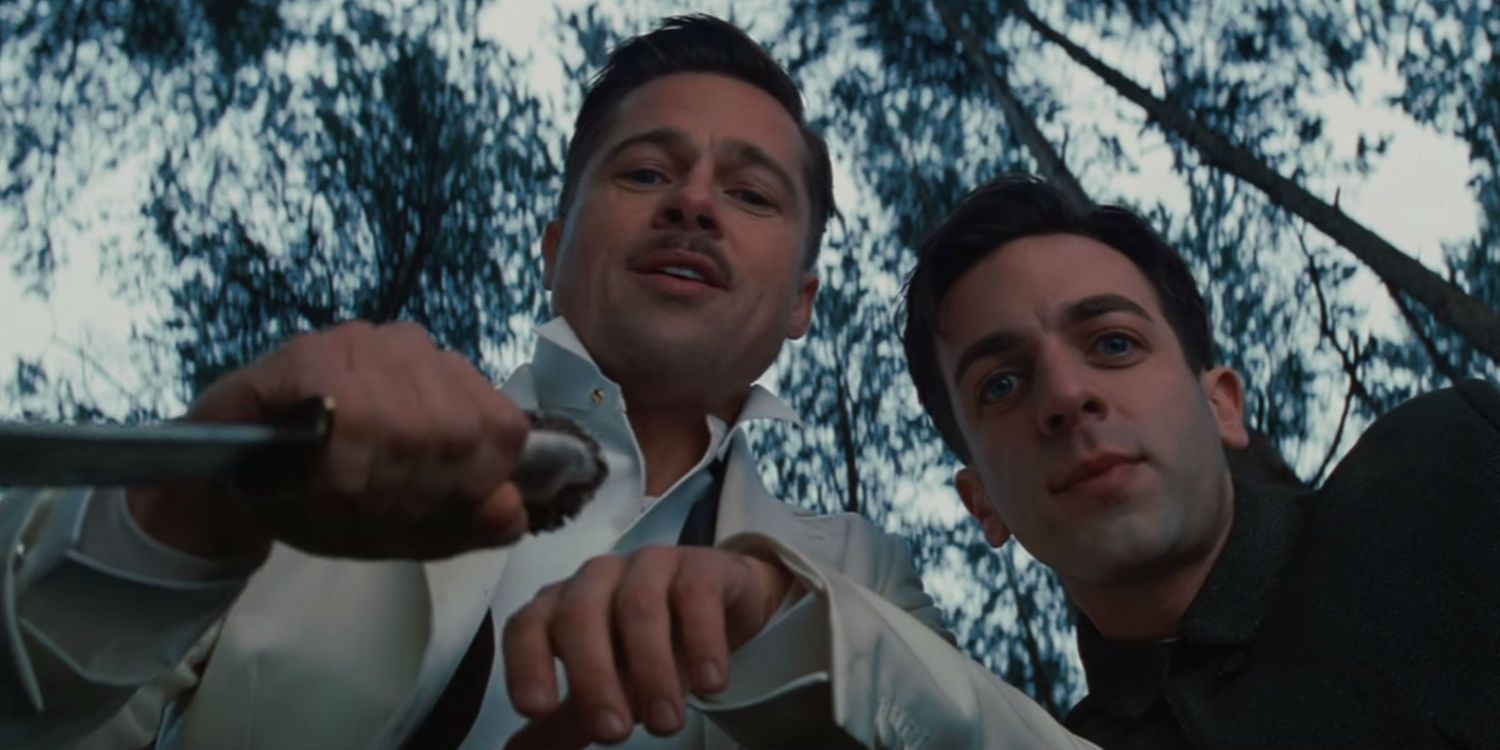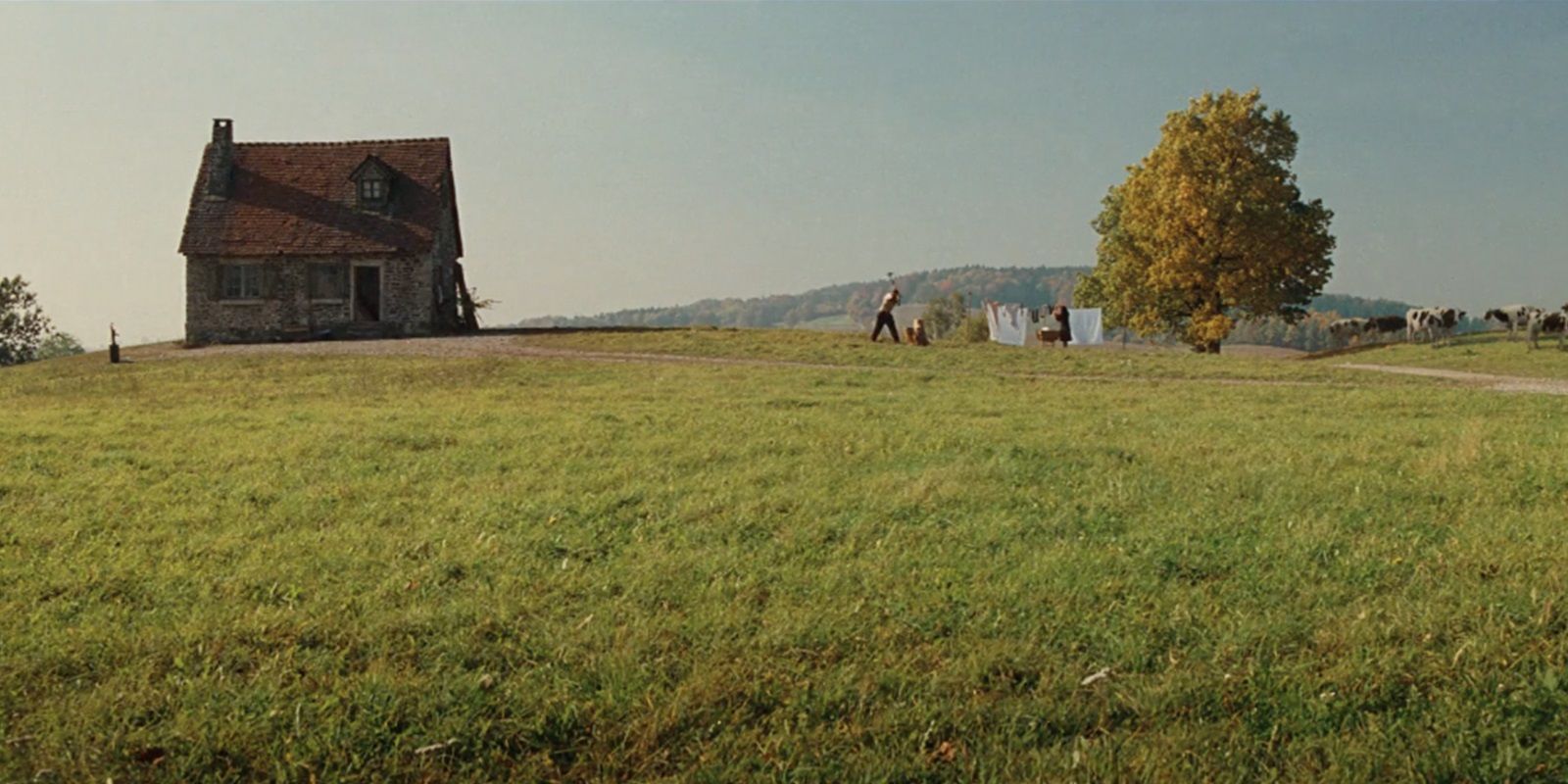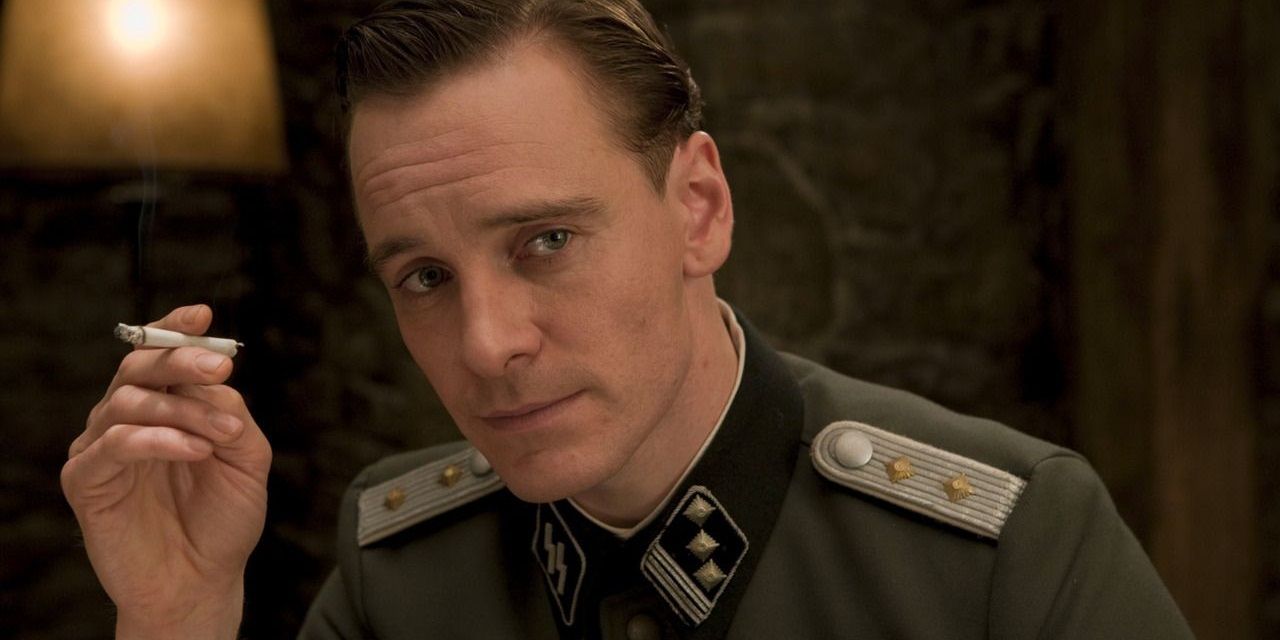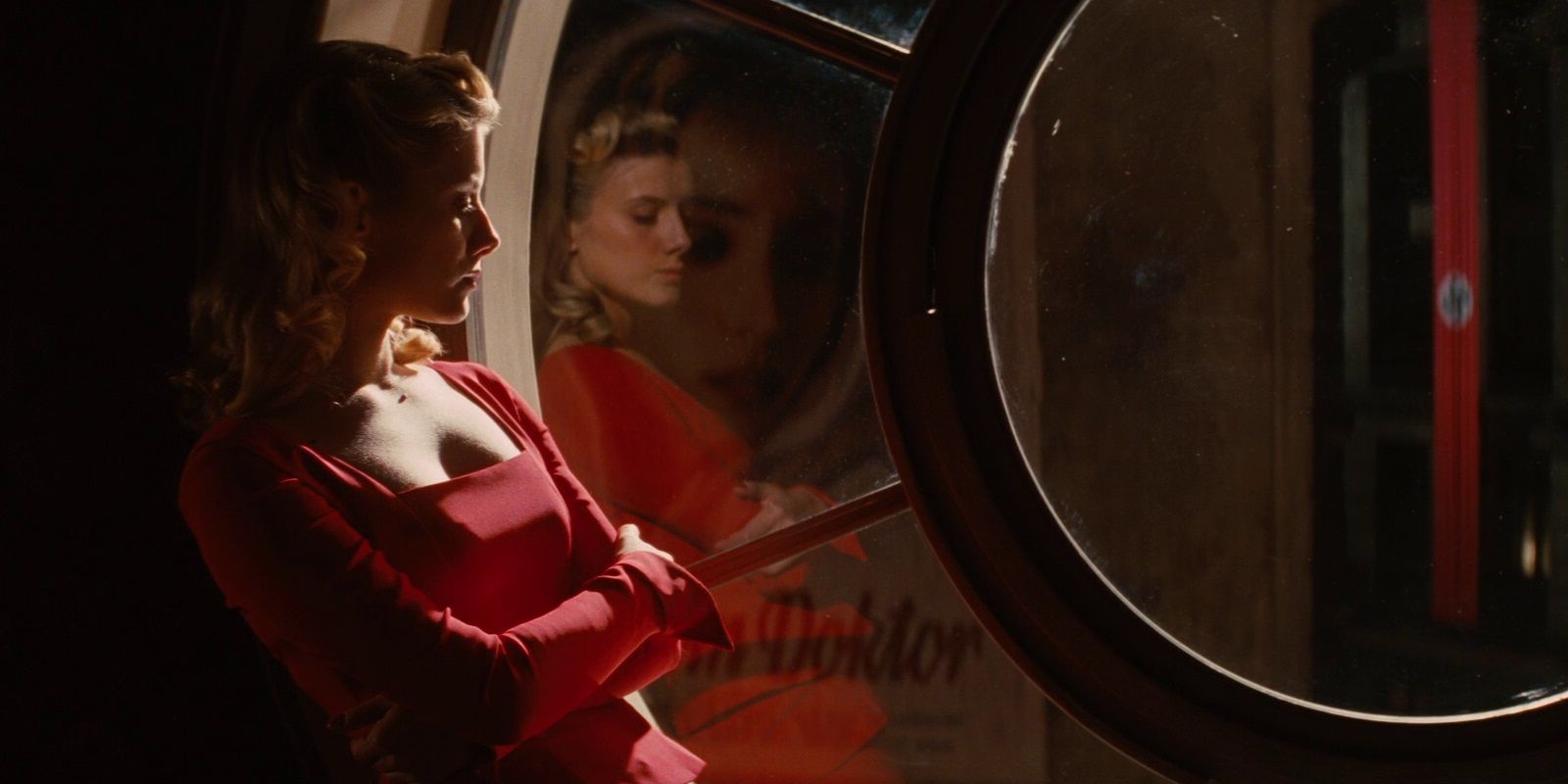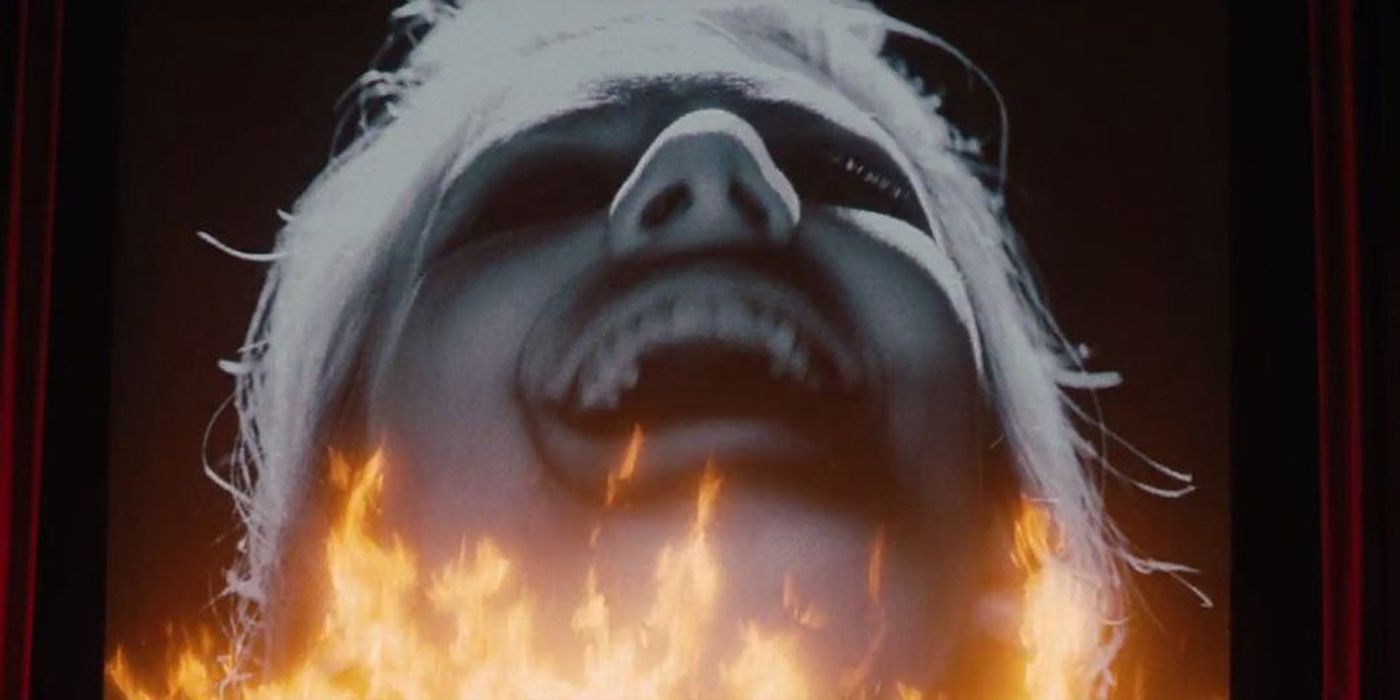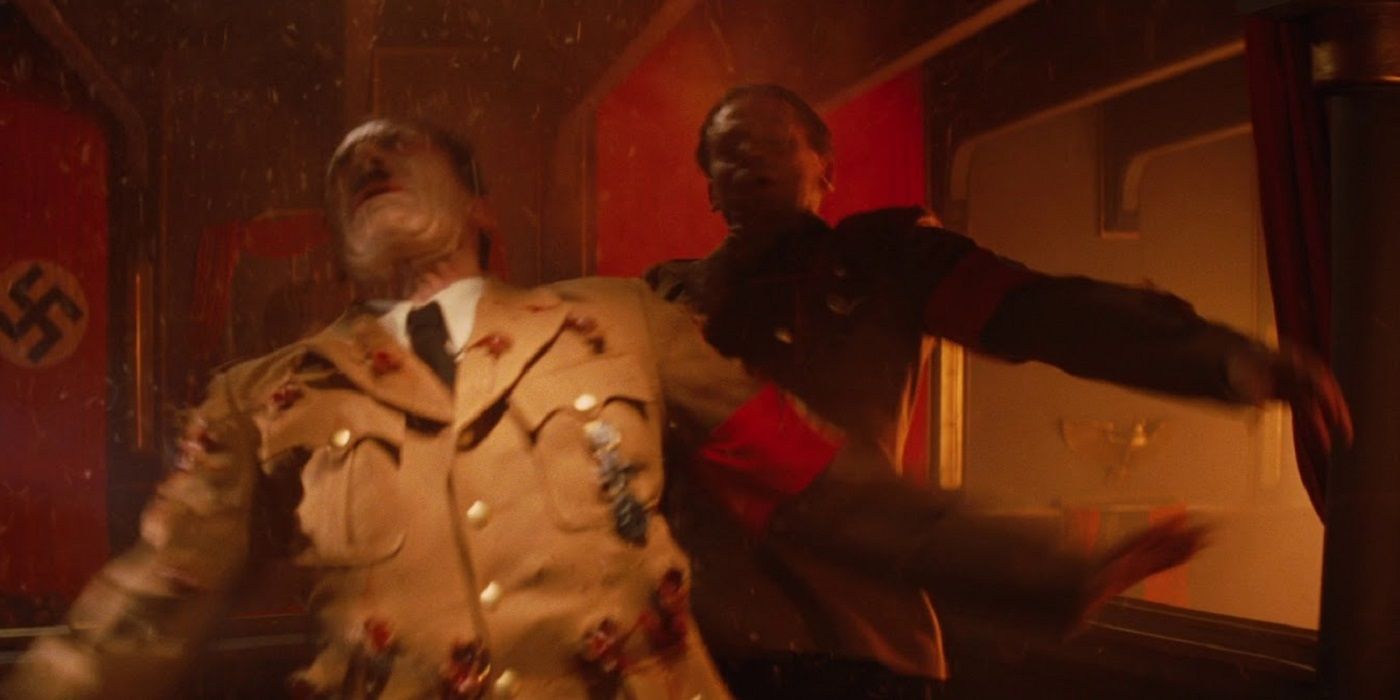Quentin Tarantino’s most notable contribution to cinema is his subversive take on genre. Whenever Tarantino tackles a genre, like a crime movie or a kung fu movie or a spaghetti western, he sets out to subvert the expectations of that genre while still delivering the goods. At their best, Tarantino’s movies give the audience what they want and also give them something they weren’t expecting.
A perfect example of this is Inglourious Basterds, Tarantino’s Oscar-winning World War II epic. The movie adheres to a bunch of well-known war movie tropes, but also subverts the genre’s expectations in a few key areas.
Tropes
Guys On A Mission
A bunch of guys embarking on a mission is practically a war movie subgenre of its own. From The Dirty Dozen to The Guns of Navarone, many classic war films fit into this framework.
While its subplots take it to different places, Inglourious Basterds is essentially Tarantino’s take on a guys-on-a-mission war caper. The titular Basterds are tasked with tearing through Nazi-occupied Europe, collecting scalps for their Apache leader.
Telling The Story From The Allies’ Perspective
American and British WWII films tend to be told from the perspective of the Allies, because they were Allied countries. Christopher Nolan’s Dunkirk was considered a rarity for depicting a defeat for the Allies.
Sam Peckinpah’s Cross of Iron is told from a German perspective, but the majority of WWII films produced by Allied countries are told from the Allied perspective. Tarantino follows the Allies’ perspective and gives them an even more glorious victory than they got in the real-life conflict.
Romantic Subplot
War movies tend to have a romantic subplot running alongside the main storyline in order to lighten up the genre’s traditionally harrowing storytelling. These romantic subplots usually involve a male soldier falling in love with a female civilian: Red Tails, Pearl Harbor, From Here to Eternity, the list goes on.
In Inglourious Basterds, Tarantino put a fresh twist on this familiar trope with a German soldier unwittingly falling for a Jewish refugee in hiding. Frederick Zoller’s futile attempted courtship of Shosanna Dreyfus, of course, ends in tragedy.
Flashbacks
The protagonists in war movies usually have flashbacks to previous war experiences or life before the war, either to fill in their backstory or to show the psychological effects of warfare. This technique was most recently seen in Spike Lee’s Vietnam War drama Da 5 Bloods.
It can also be seen in First Blood, as John Rambo’s PTSD is triggered in the precinct when police brutality brings back memories of torture in Vietnam. In Inglourious Basterds, the audience is swept into a flashback detailing the origin story of Hugo Stiglitz as an electric guitar lick blares onto the soundtrack.
Overplaying The United States’ Role In Winning World War II
There’s a trope listed on TV Tropes called “America Won World War II.” This trope refers to war movies that overplay America’s role in the Allies’ victory in the Second World War, or at least minimize the role of the other Allied countries.
In Inglourious Basterds, America literally wins World War II. Col. Hans Landa tries to orchestrate it so that he gets the credit, so American soldiers kill his right-hand man and carve a swastika into his forehead. American soldiers kill Hitler in the movie, too.
Subversions
Spaghetti Western Style
Italian war films were dubbed “spaghetti war” films (or “macaroni combat” films), but Tarantino’s war movie is more heavily inspired by Italian westerns – the more famous Italian movie subgenre known as “spaghetti westerns.”
With a nice mix of wide-angle shots and intense closeups and plenty of recycled Morricone music from his western catalog, Inglourious Basterds is essentially a spaghetti western set during World War II.
High-Stakes Undercover Mission
Old-school war movies like Where Eagles Dare depict undercover soldiers seamlessly fitting in with their enemies as a given. Tarantino saw the untapped tension in this setup. Inglourious Basterds depicts undercover spies speaking in their enemies’ language, desperately trying to assimilate, as opposed to the usual all-English copout.
The spies’ cover is eventually blown by a slightly incorrect hand gesture. High-stakes acting is a recurring theme in Tarantino’s films, from Reservoir Dogs to The Hateful Eight. Samuel L. Jackson’s mob hitman in Pulp Fiction even talks about “getting into character.”
Female Protagonist
War movies are usually very male-centric. Some of them have an all-male cast and in the others, female cast members tend to be relegated to the roles of love interests, switchboard operators, and grieving mothers.
Tarantino subverts this brilliantly in Inglourious Basterds with the character of Shoshanna Dreyfus, a Jewish refugee and cinema owner who successfully plots to burn Adolf Hitler and his top brass alive.
Meta Deconstruction Of Cinema Itself
War movies don’t usually have a lot of time to meditate on their own medium, but Inglourious Basterds uses the film-within-a-film, Nation’s Pride, to explore the role of propaganda in World War II.
A German movie star hides among the undercover spies and the finale takes place in a movie theater at a movie premiere. Inglourious Basterds is as much a meta deconstruction of cinema itself as it is a meta deconstruction of the war movie genre.
Hitler’s Historically Inaccurate Death
The boldest way that Tarantino subverts the expectations of war films in Inglourious Basterds is by killing off Hitler. No other war movie has been bold enough to kill Hitler in such a brutal and gleefully historically inaccurate way.
Revisionist history has gone on to define Tarantino’s latter-day filmmaking. Django Unchained saw a slave going from plantation to plantation, killing white slavers, while Once Upon a Time in Hollywood saw the Manson Family members who murdered Sharon Tate getting their comeuppance.

